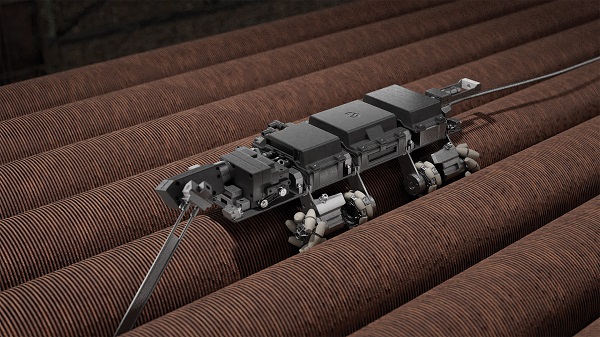A Comparative Analysis of ROV Convection Section Cleaning vs. Chemical Cleaning in Fired Heaters
Finding a Solution to Fired Heater Fouling
Fired heater convection section fouling is a persistent challenge in refineries, and chemical and petrochemical plants, significantly impacting thermal efficiency and operational costs. Traditional chemical cleaning methods have long been the industry standard. Still, emerging robotic cleaning technologies, such as the Convection Section Cleaning ROV (Remotely Operated Vehicle) from IGS TubeTech™, offer a compelling alternative.
This blog aims to provide a comprehensive comparison of these two cleaning approaches, highlighting the risks associated with chemical cleaning and the long-term benefits of robotic cleaning.
Chemical Cleaning: Risks and Drawbacks
While chemical cleaning can remove some fouling deposits, it carries significant risks and drawbacks:
- Release of Chemicals in the Atmosphere: Chemical cleaning often involves using ammonia-based chemicals, hazardous solvents and acids, which can be released into the atmosphere during the process. These emissions pose environmental and health risks to workers and surrounding communities.
- Unpredictable Chemical Reactions: Chemical cleaning can lead to unpredictable reactions in complex heat-critical process systems with varying materials and contaminants. These reactions may polymerize the deposits, compromise the tube’s structural integrity, and create additional operational challenges. Many deposits are inert to chemical reactions; therefore, the process exacerbates fouling by creating sludge-like deposits.
- Refractory Damage: The aggressive nature of chemical cleaning agents can erode refractory linings within heat exchangers. This damage reduces the equipment’s thermal efficiency and increases the risk of hot spots, leading to premature failure.
- Fast-vanishing Results: Chemical cleaning often shows satisfactory results, but the benefits are short-lived. The superficial nature of the process, taking an unknown path of least resistance through the heat transfer tubes, can leave fouling behind, accelerating the re-fouling process and necessitating frequent cleaning cycles. It rarely penetrates deep into multi-layers of finned tubes.
ROV Convection Section Cleaning: A Sustainable Alternative
The Convection Section Cleaning ROV technology offers a proven alternative to chemical cleaning, addressing its inherent risks and limitations:
- Environmentally Friendly: The ROV cleaning process utilizes low-volume, high-pressure water jets and mechanical tools, eliminating the need for hazardous chemicals and minimizing environmental impact.
- Precise and Controlled Cleaning: The ROV’s patented robotic arm and specialized tools enable precise, accurate and controlled cleaning of heat exchanger transfer tubes, minimizing the risk of damage to internals and refractory linings. The cleaning rover moves on the top of the bank and the patented lance system penetrates between the tube rows, oscillating as it moves and adjusting its angle to each bundle.
- Long-term Benefits: The ROV’s cleaning action removes fouling deposits from all tube and fin surfaces, extending the duration of future fouling and the cleaning intervals. This translates to reduced operational costs and improved thermal efficiency in the long term. The ROV cleaning technique often returns assets to an ‘as built’ level of cleanliness, returning OEM designed in fouling factors for prolonged performance.
- Inspection Capabilities: The ROV-mounted cameras can be used to inspect the convection banks and identify the extent of fouling before cleaning, ensuring a more targeted and effective cleaning process.
Conclusion
The ROV Convection Section Cleaning technology presents a compelling alternative to traditional chemical cleaning methods in process heat transfer equipment. By eliminating the risks associated with chemical usage, providing precise and controlled cleaning, and offering long-term benefits in terms of fouling prevention and removal, the ROV technology represents a significant advancement in heat exchange transfer maintenance. As the industry increasingly prioritizes environmental sustainability and operational efficiency, adopting robotic cleaning technologies is poised to play a pivotal role in shaping the future of refinery operations.

